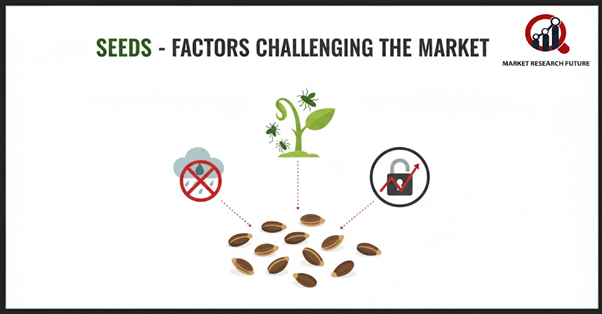Seeds: Factors Challenging the Market

Introduction to Seed Market Overview
The growing demand for the agricultural industry, catering to the necessity of food for the rising population, is a key driver for the global seeds market. The size of the sector is set to reach USD 99.84 billion by 2035. Owing to a sluggish CAGR of 3.85% through 2035, the market is likely to be uplifted from USD 65.88 billion in 2024.
Take a quick look at your local gardening shops or department store markets, and you’ll notice one clear trend- seed demand is steadily growing not only in volume but also in variety. Every spring brings with it a new type of bean, a different pumpkin variant, and several experimental hybrids that promise better yield and flavor.
With so many options and an ever-evolving market, many suppliers are struggling to meet diverse consumer demands, particularly when it comes to supply chain management and sustainability.
The 21st century has witnessed a dramatic shift in the global food system and agricultural practices. Today, sustainable agriculture and organic farming are becoming the new norm.
For instance, organic food sales in the US grew from about $2 billion two decades ago to over $60 billion by 2023, reflecting a strong public preference for natural, eco-friendly products.
This shift is also visible in retail: organic-focused stores such as Whole Foods have reported an 8% increase in sales, while conventional grocery chains like Safeway have seen declines of around 3%.
The growing concern for sustainability is not limited to agriculture. It extends to consumer choices and brand reputations. Consumers increasingly value food that supports environmental balance, reduces greenhouse gas emissions, and minimizes chemical fertilizer runoff.
Impact on the Seed Industry
The organic food movement has directly influenced the seed market. Organic farmers are required to use USDA-certified organic seeds, meaning they must originate from non-GMO parent varieties and be produced without synthetic fertilizers, herbicides, or pesticides.
To earn organic certification, seed companies must undergo rigorous microbiological testing and verification, which can be costly. As a result, only well-funded farmers and suppliers can consistently comply with these standards.
This has created a two-tier market. One dominated by large-scale seed producers and another by small-scale organic farmers who often struggle to source certified seeds.
Shifting Consumer Preferences
If you value fresh, wholesome, and naturally grown food, you already know that seed quality is a critical determinant of produce quality. With so many varieties available, from heirloom to hybrid to organic, farmers often face tough decisions about which seeds to plant.
Understanding market demand helps farmers make these choices. Since 1995, demand for organic and non-GMO seeds has risen sharply as consumers seek healthier options.
Despite this increase, conventional farming still dominates: roughly 75% of U.S. farmland uses conventional seeds, while only about 1% is planted with certified organic seeds, according to a DuPont Pioneer report.
To understand this balance between demand and supply, a survey conducted among 1,200 farmers revealed how environmental and market factors influence seed selection. Farmers were asked about crop demand, pest resistance, compliance issues, and how government importation policies or weather patterns affected their choices.
Key Findings from the American Farm Bureau Federation Study
The American Farm Bureau Federation's Market Access Program conducted a detailed study to measure market demand for major crops and assess how farmers adapt to evolving conditions. The results were revealing:
- Water availability is the top challenge for nearly two-thirds of growers. Droughts and water shortages have made crop planning increasingly difficult. In fact, 74% of respondents said they would be more likely to plant a particular crop if there was less competition for water.
- Pest and disease resistance strongly influences seed selection. About 44% of growers said they would prefer seeds with higher resistance to pests and diseases, while others favored crops that require fewer pesticides.
- Regulatory compliance continues to shape decisions, especially among those buying or cultivating heirloom or organic seeds. However, obtaining compliance certifications remains time-consuming and costly.
These findings highlight that environmental challenges and regulatory pressures are now just as influential as market demand when it comes to seed choices.
Regional Analysis
The global seed market shows significant regional variations. North America remains a dominant region, driven by biotechnology adoption, high R&D spending, and widespread GM crop cultivation in the United States and Canada.
Europe maintains a more cautious approach with stringent GMO regulations but continues to grow in the organic seed segment, especially in countries like Germany, France, and the Netherlands.
The Asia-Pacific region is witnessing rapid expansion due to increased agricultural activity in India, China, and Southeast Asia. Rising population and food demand are encouraging farmers to adopt hybrid seeds with better yield and disease resistance

Leave a Comment